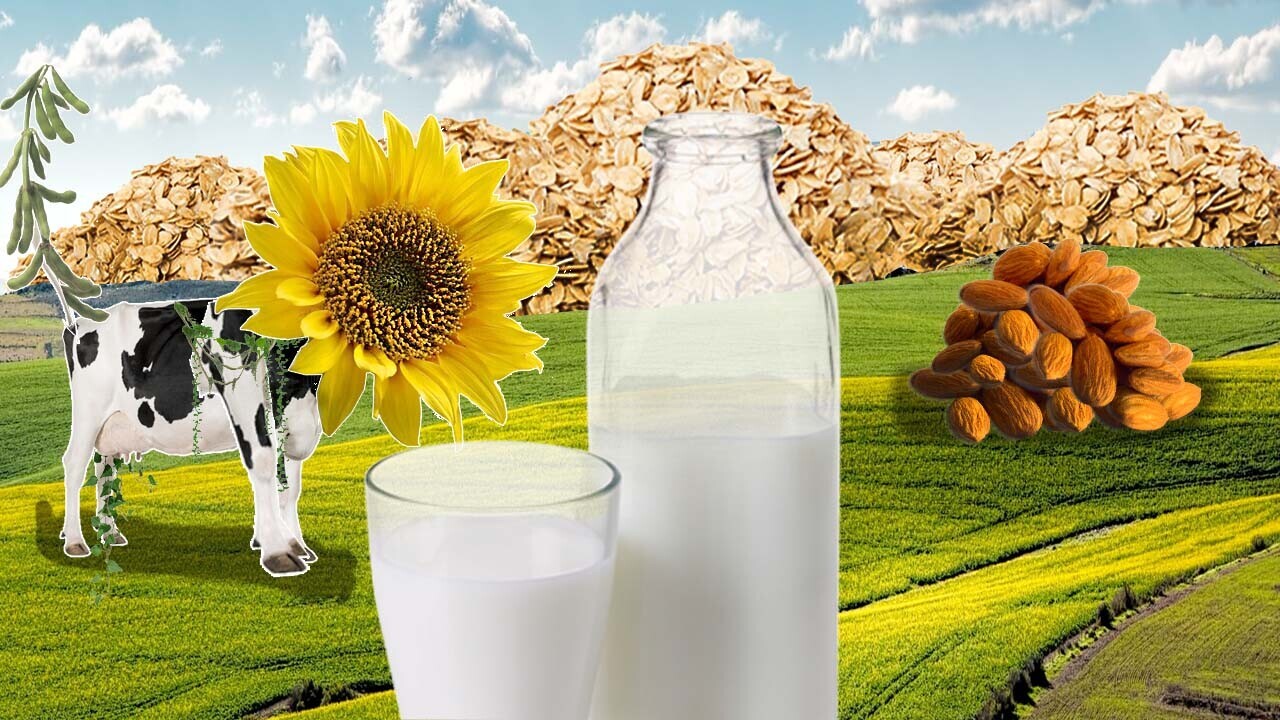
People care about climate change and animal welfare — so it’s no wonder the demand for plant-based products has exploded in the last couple of years. The alternative dairy market is expected to triple over the next decade, reaching a whopping $32 billion USD by 2031.
But what exactly is it that will determine success within this fast-growing industry? And what do startups need to know in order to attain partnerships with the corporates that can get their products on the map?
Well, in my experience, it all boils down to four key lessons — but let’s begin with outlining the research I’m basing this on before diving into each of them.
Getting to know the field
My team at TNW works with industry-leading companies and governments all over the globe looking to partner with or support small innovative businesses in expanding their reach. Two of our most interesting recent projects involved scouting plant-based dairy startups for industry leaders in the fast-moving consumer goods (FMCG) sector.
My following insights derive mostly from working on this report, in which the TNW scouting and research team, along with nlmtd, mapped a couple of the most promising startup-corporate collaborations in the plant-based dairy space.
Of course, I recommend you check out the full report — it’s a thrilling read — but what we basically saw was that while the number of bets on plant-based startups has been growing, the bar remains pretty high for the adoption of these products on a large scale.
So, here are my four key insights for startups and scale-ups who want to attract the right partnerships to succeed in the alternative dairy market.
Tip #1: Nutrition is one, naturalness is two
What I heard a lot in my conversations with industry leaders was that nutrition and naturalness are often misunderstood by consumers and sometimes miscommunicated by startups.
Claims that refer to the amount of a certain natural ingredient (for example, ‘this product is 35% almonds’) say very little about the level of naturalness of that food product.
In fact, naturalness, as seen by FMCG leaders, has more to do with the content of artificial sweeteners or preservatives — as well as other elements.
A study conducted by Hero Group with the University of Murcia and ETH Zürich, published in 2017, provides a helpful three-part organization to define naturalness:
- If the origin of the food includes the use of organic raw material grown locally
- If the production of the product is free from artificial ingredients, preservatives, additives, artificial colors and flavors, chemicals, hormones, pesticides, and GMOs
- And finally, if the end product is healthy, eco-friendly, and fresh
Nutrition, on the other hand, is more straightforward. In dairy, it often relates to the protein content versus the levels of fat and sugar. While high protein amounts are highly desired, fat and sugar are unwished for.
The balance between the three is really key if your aim is to impress nutrition experts in FMCG corporations. So if you want to woo partners, compensating the taste of your plant-based ingredient that is high in protein with loads of sugar might not be the best way forward.
Tip #2: Taste and texture as the gate-keepers of future demand
Another two criteria that FMCG corporations repeatedly brought up when discussing new plant-based dairy concepts were taste and texture.
It didn’t matter whether we were talking about milk, yogurt, butter, cheese, or spreads — taste and texture cannot be left aside if the goal is to choose a product that consumers will change their diets for.
While the untapped demand for plant-based products is big, the curiosity of consumers for product experimentation might not always be this high.
Once a few players achieve in plant-based dairy what consumers are used to experiencing in traditional dairy products, the market will be theirs for the taking — or at least that is what industry leaders bet on.
Currently, the levels of taste and texture of plant-based dairy products vary a lot from product to product, and that is of course natural to the experimental and radically innovative period that the market is in.
But when consumer preferences consolidate, a premium experience of taste and texture is going to make the difference between a successful and a forgotten plant-based dairy brand, especially when we talk about indulgent dairy products, such as flavored yogurts and cheese.
Tip #3: Cheese is the Holy Grail
Cheese alternatives are considered the next frontier in product development and plant-based innovation.
The market of alternative milk and yogurt — either made from legumes, nuts, or grains; or developed in laboratories based on cells — is in a period of expansion and global adoption. The market for alternative cheese is growing alongside the new milk trend, but at the same time, it faces more scrutiny from traditional dairy and a level of skepticism from consumers.
For an ambitious startup, a challenge like that is just another word for a business opportunity. In fact, we can easily observe the huge appetite for entrepreneurship in the plant-based cheese category.
The way things are set up now, to me it seems like startups in North America, Europe, Latin America, and Asia are working non-stop around the clock to find what is the best possible combination of ingredients and which process produces the tastiest plant-based cheese. So you better be quick if you want to beat them to it.
Tip #4: Online, transparent, and (better if) local
Sustainability, animal welfare, dietary requirements, healthy lifestyle. All of these are consumer trends that have been directly boosting the growth of the plant-based dairy industry.
Complimentary to that, I also see trends of convenience, consumer ethics, and community-driven economics are expected to have a significant impact on the direction in which plant-based entrepreneurship moves.
Our scouting research and discussions with FMCG industry leaders indicate that the need for convenience and flexibility creates space for new product formats as well as business models.
For example, consumers are already open to experimenting with subscription models, in which plant-based products such as oat and almond milk are delivered to their door at regular intervals of their choice. Another growing product offering is ready-to-go plant-based yogurts and milk bottles, a format already known by the traditional dairy industry.
But I also feel we can’t overlook the fact that consumers have a broader understanding of the impact their choices have on the prosperity of society, the environment, and the economy.
Information and transparency are key for individuals to build trust in both new and traditional brands. This has led to a preference for plant-based products that openly share information about the sourcing of their ingredients, as well as production methods and impact across the value chain.
Sure, established global brands may be far ahead when it comes to scale, expertise, and reach — but young companies can outshine them when it comes to connecting with consumers.
So if your startup is aiming to make big waves in this space, I recommend you work with the local communities and wisely choose the source of your products. That way can stay ahead by being more in touch with what future generations really want.
Get the TNW newsletter
Get the most important tech news in your inbox each week.




